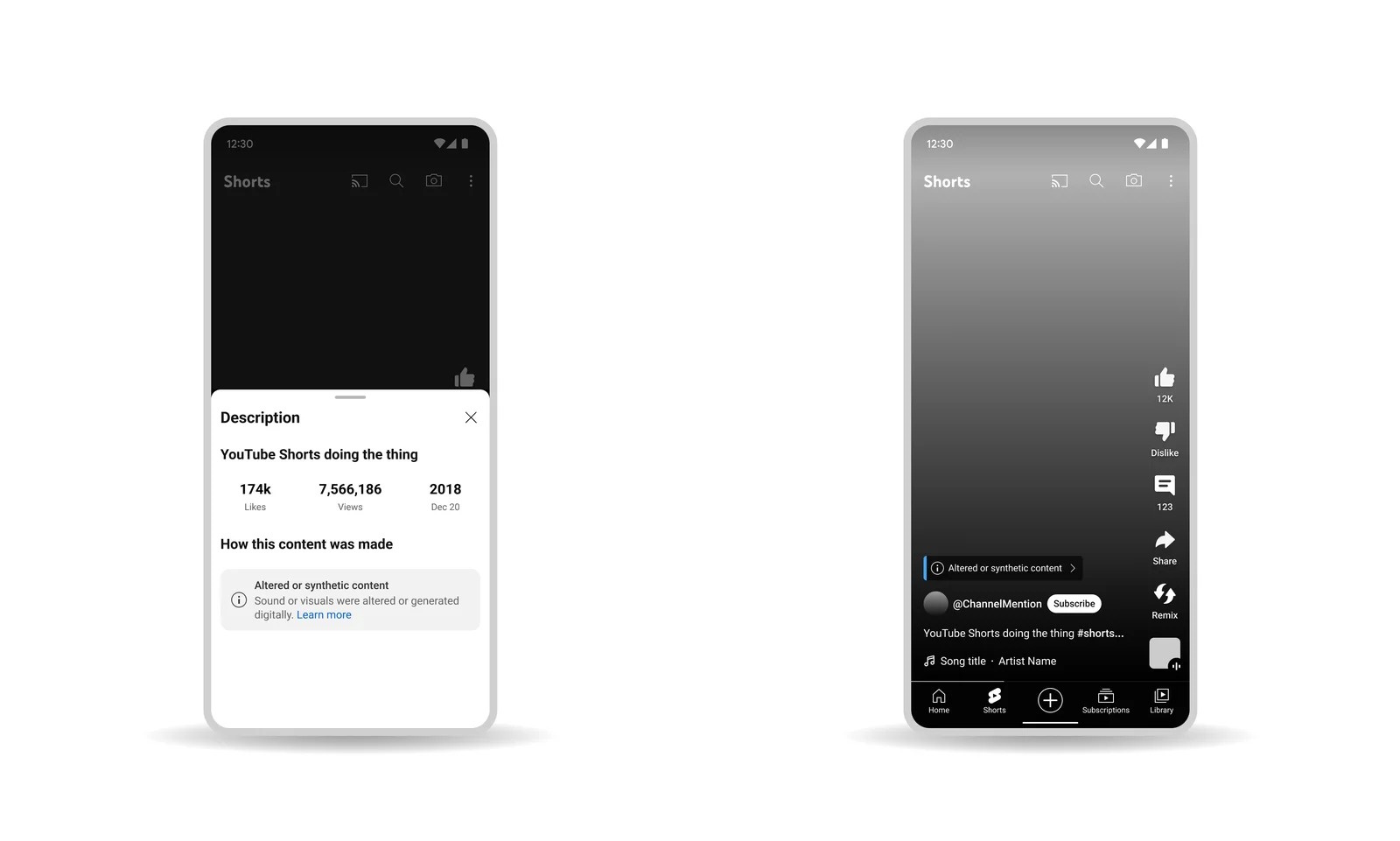How YouTube are dealing with AI content
Image credit: YouTube
YouTube have announced their policies for dealing with AI content, including what they’ll allow (which is most of it).
AI content is no joke anymore. Convincing voice generators and videos blur the lines between reality and fiction. YouTube have outlined their next steps in a world of information that has no choice but to welcome AI content.
As the world’s number one video platform, eyes have been on how they’ll deal with AI content. AI is already proliferating on YouTube, with deepfakes of politicians, fake songs from artists using an AI version of their voice, and so much more.
So, YouTube have spoken on their plans. Largely, it seems they’re willing to accept AI content on the platform. Perhaps as they’re aware that it is too big to fully control and restrict, AI content won’t be banned from YouTube.
Instead, YouTube have plans to label content that is AI generated for viewer clarification. They want to make a space on their platform for AI content that doesn’t infringe YouTube policies and isn’t intended to mislead.
YouTube are introducing a label in the description panel that clarifies which content is artificially generated. Certain types of content will feature a more prominent label in the video player. That includes content that discusses sensitive topics where truth is essential, such as politics and world conflicts.
They will require content creators to mark their content as altered or generated upon upload. Creators who fail to do so may face content removal, suspension from the YouTube Partner Program, and “other penalties”.
Ensuring viewers don’t believe what they’re watching is real when it isn’t is the biggest challenge. It’s unlikely that YouTube can introduce a label notable enough to ensure every viewer is informed. This is simply the challenge we all have to tread in a world in which AI content is easy-to-create, convincingly real, and simple to share.
YouTube will continue to “prohibit technically manipulated content that misleads viewers and may pose a risk of egregious harm”. Of course, being aware of all of this content will be a constant struggle.
Using AI to steal people’s image
One of the biggest concerns, particularly for notable figures, is the replication of their likeness. Whether that be a video that uses their face or audio that recreates their voice.
In order to protect victims of digital reproduction, YouTube are introducing a new removal request. It will be possible to request the removal of content that simulates the image or voice of an individual without their consent.
YouTube will be introducing the new removal request option in their privacy request process. YouTube promise to take this process seriously, even if the person involved isn’t well-known or clearly identifiable.
YouTube’s music partners will also be able to request the removal of AI-generated music content. Content that mimics an artists voice can be requested to be removed. YouTube will then analyse the content and its purpose.
Music removal requests will be available to those participating in YouTube’s AI music experiments first. They promise to introduce it to further labels and distributors in the coming months.
YouTube’s AI content music experiments
On a lighter, though stranger, note: YouTube have announced a new tool that actually promotes AI content. Dream Track allows for the creation of music using AI versions of artists’ voices.
They’ve partnered with 9 artists to allow their voices to be recreated by users. Users will be able to create AI generated song snippets featuring generated vocals from partnered artists. Those users can then use that snippet in their Shorts content.
YouTube are treading a tricky line. Playing one half of the game restricting AI generated content, and playing the other side by actually producing that content. Although, if the content is generated by YouTube’s tools themselves, they can at least keep track of it.
Warner Music boss Robert Kyncl feels this is a great thing. If the world is going to feature AI content regardless, we should at least be in control of it. That is the thinking behind Kyncl’s support.
He said in Warner’s Q4 earnings call: “Imagine in early 2000s, if the file sharing companies came to the music industry and said ‘would you like to experiment with this new tool that we built and see how it impacts the industry and how we can work together?’ It would have been incredible.
“Obviously, that didn’t happen. So this is the first time that a large platform at a massive scale, that has new tools at his disposal is proactively reaching out to its partners to test and learn.”
At RouteNote, you can get your music on all of YouTube’s platforms. Feature on YouTube’s Shorts library for use in videos seen by billions, get paid when your music is featured in YouTube videos, and let listeners stream your tracks on YouTube Music.
